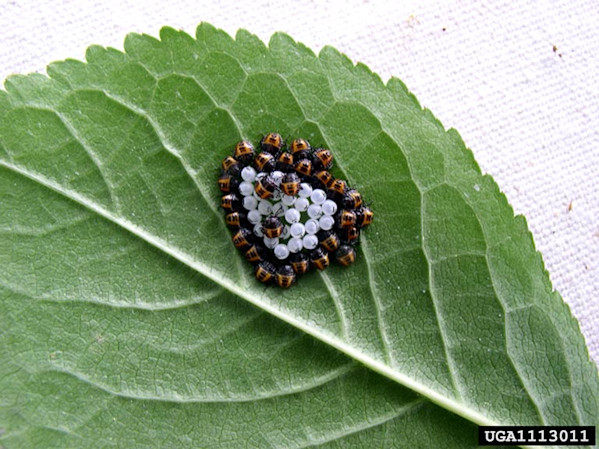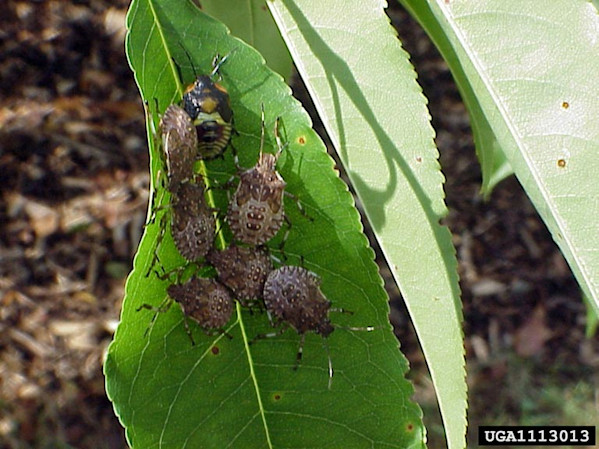How to Identify Brown Marmorated Stink Bugs
Identifying the brown marmorated stink bug (BMSB) is crucial for effective pest management. Here are specific and detailed characteristics to help farmers identify this pest:
Physical Characteristics:
Size and Shape:
Adult BMSBs are approximately 1.7 cm (0.67 inches) long.
They have a shield-shaped body, typical of stink bugs.
Coloration:
The body is mottled brown, with a marbled appearance.
The underside is pale, sometimes with a reddish tinge.
Antennae:
The antennae have distinctive white bands on the fourth and fifth segments.
Legs:
The legs also feature faint white bands.
Edges of the Abdomen:
The edges of the abdomen, visible from above, have alternating dark and light bands.
Life Stages:
Eggs:
Eggs are light green, barrel-shaped, and laid in clusters of 20-30 on the underside of leaves.
Nymphs:
Nymphs go through five instar stages.
Early instars are small, round, and black with red markings.
Later instars develop the characteristic shield shape and begin to show the mottled brown coloration.
Behavior and Damage:
Feeding:
BMSBs use their piercing-sucking mouthparts to feed on plant juices.
Feeding results in pitting, scarring, and deformation of fruits and vegetables.
Aggregation:
BMSBs are known to aggregate in large numbers, especially in the fall when seeking overwintering sites.
Monitoring:
Visual Inspection:
Regularly inspect crops, especially the undersides of leaves, for eggs, nymphs, and adults.
Pay attention to the edges of fields and areas near wooded borders, as BMSBs often migrate from these areas.
Traps:
Use pheromone traps to monitor BMSB populations. These traps can help detect the presence and density of the pest.




